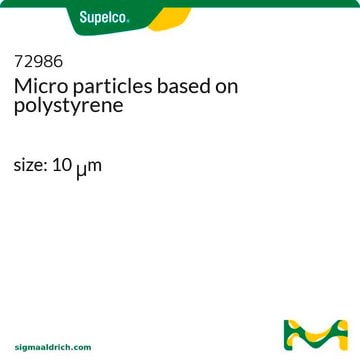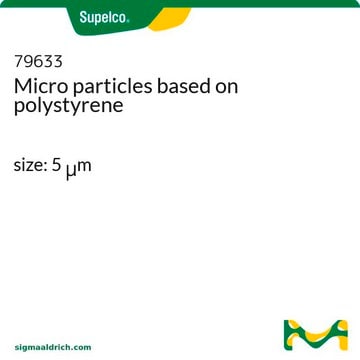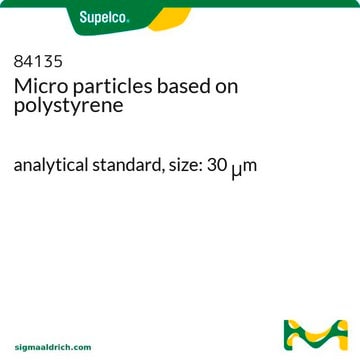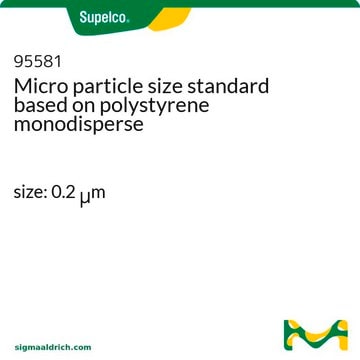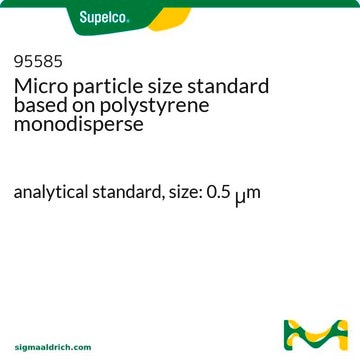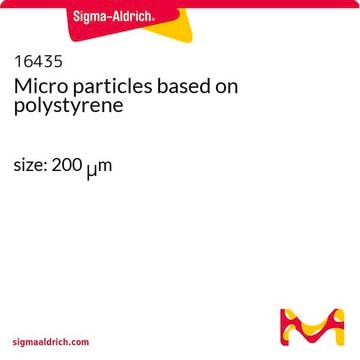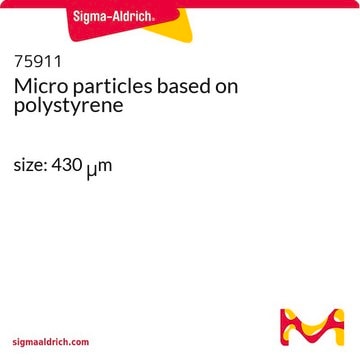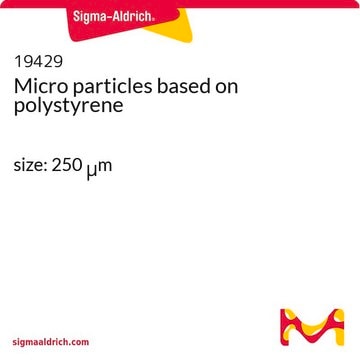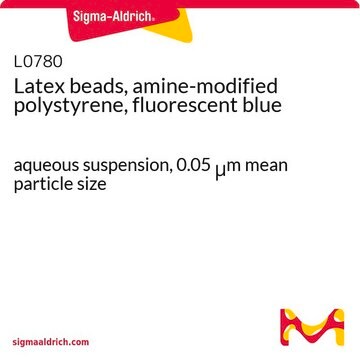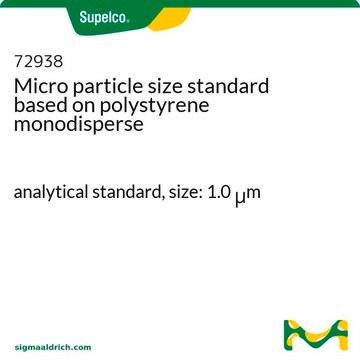The product was not test using the UV-vis system. Therefore, the data are not available.
43302
Micro particles based on polystyrene
size: 100 nm
Synonim(y):
Latex beads from PS
Wybierz wielkość
1590,00 zł
Wybierz wielkość
About This Item
1590,00 zł
Polecane produkty
Formularz
aqueous suspension
stężenie
10% (solids)
wielkość cząstki
100 nm std dev ≤0.01 μm
gęstość
1.05 g/cm3
temp. przechowywania
2-8°C
Szukasz podobnych produktów? Odwiedź Przewodnik dotyczący porównywania produktów
Powiązane kategorie
Opis ogólny
Zastosowanie
- Electron Microscopy.
- Cell Counter Calibration.
- Immunodiagnostics, especially for latex agglutination tests, and
- Phagocytosis Research.
Komentarz do analizy
Kod klasy składowania
10 - Combustible liquids
Klasa zagrożenia wodnego (WGK)
WGK 3
Temperatura zapłonu (°F)
Not applicable
Temperatura zapłonu (°C)
Not applicable
Środki ochrony indywidualnej
Eyeshields, Gloves
Wybierz jedną z najnowszych wersji:
Masz już ten produkt?
Dokumenty związane z niedawno zakupionymi produktami zostały zamieszczone w Bibliotece dokumentów.
Klienci oglądali również te produkty
-
When measured by UV-vis, at what absorption peak does this bead appear?
1 answer-
Helpful?
-
-
Are the microparticles in a suspension sterile? Or is it possible to sterilize the suspension?
1 answer-
The polystyrene microparticles offered for sale are not sterile.
Although autoclaving is a common method of sterilization, polystyrene microparticles are not autoclavable. Filter sterilization is also not a practical method. There are no available protocols for sterilizing polystyrene microparticles. From the remaining methods for sterilization, it should be possible to sterilize in 70% ethanol for 30 minutes and then rinse away the ethanol with sterile water. For small batches, UV radiation would be another option.Helpful?
-
-
What kind of surface modification are performed on these particles?
1 answer-
These particles possess a negative charge and have residual sulfate end groups as a result of the manufacturing process. This is not considered to be a functional group as would a carboxyl-, aldehyde-, or amine-functionalized product.
Helpful?
-
-
Tween 20과 같은 분산제가 함께 첨가되었는지 문의드립니다.
1 answer-
Micro Particles or Latex beads are supplied in aqueous solutions composed of polymer particles with water. No surfactant has been added.
Helpful?
-
Active Filters
Nasz zespół naukowców ma doświadczenie we wszystkich obszarach badań, w tym w naukach przyrodniczych, materiałoznawstwie, syntezie chemicznej, chromatografii, analityce i wielu innych dziedzinach.
Skontaktuj się z zespołem ds. pomocy technicznej